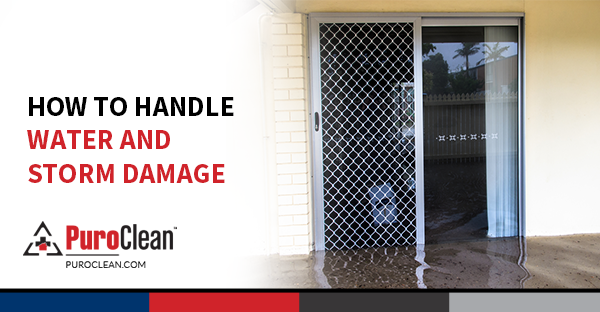 After water or storm damage, take action immediately to prevent further damage to your home and mitigate the loss. Getting through this experience is difficult, but you can recover from the disaster more easily by following some guidelines. The following tips can help you get your home back in order after experiencing flooding or storm damage:
After water or storm damage, take action immediately to prevent further damage to your home and mitigate the loss. Getting through this experience is difficult, but you can recover from the disaster more easily by following some guidelines. The following tips can help you get your home back in order after experiencing flooding or storm damage:
- Call your insurance company as soon as possible. Take photographs of the damage and show them to your agent. Keep receipts if you are staying at a hotel or buying home repair materials, in case these expenses are covered by your insurance policy.
- Check the pipes inside and outside your home. If necessary, shut off the home’s water supply from the master valve. If sewage backup occurs, don’t use any other sink or toilet. Avoid taking risks and call a professional to fix plumbing problems.
- Check your roof for damaged or missing shingles. If only a few shingles are missing, cover the area with a plastic garbage bag or caulk the exposed nail heads for a temporary fix. Larger areas of ripped tarpaper or wood can be covered with a tarpaulin, but calling a professional to fix the roof may be the wiser choice.
- Disconnect appliances that have had their power source exposed to water. Have them serviced before using them again. In case of sparks or frayed wires, or even wires that have been submerged in floodwater, call an electrician as soon as possible. Keep the power off or turn it off from the main circuit breaker until all electrical issues are solved.
- As far as water damage restoration goes, your best plan to restore your home is to call a professional restoration company. However, if you have no choice or want to take water damage restoration into your hands, here are some tips to consider:
- Wear boots, gloves, eye protection, and a respirator to avoid contact with contaminants.
- Remove porous items that have been contaminated by floodwater, such as carpeting, carpet padding, furniture and drapes.
- Use air movers and dehumidifiers to dry out the area.
- Throw away all medicines, cosmetics and foods (even canned goods) that have been submerged in floodwater.
- Check for hidden moisture behind wallboards, and take out damaged portions to prevent mold growth.
- Clean floors and cabinets by washing them with detergent.
- Disinfect with a solution of 1 part bleach and 10 parts water.
- Keep a photographic or video inventory of anything you must discard.
- If your automobile is damaged after the storm, notify your insurance agent, and cover broken windows if the car seems salvageable. Remember to list items in the car that have been damaged or lost.
If your basement has been flooded before, learn prevention and action guidelines here. To know how to handle flooded wood floors, check out this article. For professional fire, water, and mold restoration services, contact your local PuroClean office.



 PuroClean of Alexandria
PuroClean of Alexandria